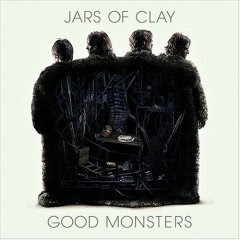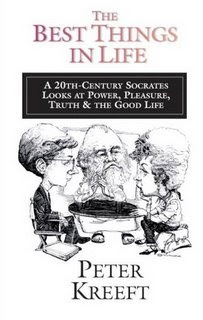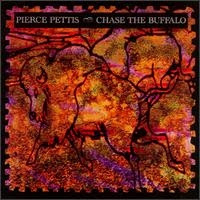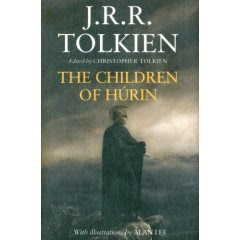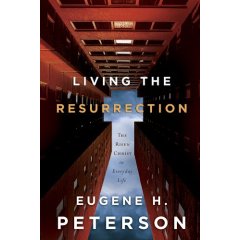One of the great literary voices of the middle and end of the 20th century, Kurt Vonnegut, died this month and we’ve had to suffer through countless obits and commentaries that all ended with his Slaughterhouse Five signature, "So it goes." Such a passing affords me the chance to tell my one, brief, Vonnegut story, which will take some very long setting up and will jump-start this month’s conversation and book list. Sit back as I tell you about hearing him in the ‘70’s.
My wife, Beth, you should know, (if only because it adds poignancy to the tale, even if it doesn’t effect the principle of the thing one wit) grew up, and as a married couple, we visited her beloved parents regularly, next to Three Mile Island. Yes, that island, with those infamous cooling towers. Quite a site out the picture window on Christmas morn. My own folks lived, as the crow flied (and as the low-level radiation blew), not far, either.
We were involved in the anti-nuclear and safe energy movement in the late 70’s, bringing Christian faith and Biblical principles of peace, justice and creation care into a largely lefty crowd in Pittsburgh, PA. Any of our activist friends who knew about spent rods and hydrogen bubbles and The Price-Anderson Act and such—former NRC staff, radiation experts, first generation environmentalists—knew that TMI was unsafe, perhaps one of the worst and most precarious in the country. To have a home next to one of the most dangerous (not to mention wasteful) places on the planet was, well, you can imagine. One very knowledgeable nuclear engineer watchdog encouraged us to counsel Beth’s folks to move, quickly.
Once, rather like Erin Brokovich, we were doing some low-grade trespassing, sleuthing for an investigative article we were doing on missing bomb-grade plutonium (out near Pittsburgh at a rural Babcox & Wilcox plant) which we believed had ties to TMI which deepened our sense of the sinister "principalities and powers" we were confronting. Some of us went to the nuclear weapons manufacturing facility near Amarillo Texas–a then secret "White Train" delivered components to a plant called Pantex, where the Hiroshima-like A-bombs, which were the firing caps to ignite the unfathomable, hydrogen explosions—where we learned more of the dark connection between unsafe power plants and the burgeoning nuclear war-fighting strategies. When the US re-aligned our nuclear missiles in a Presidential Directive for a first-strike strategy, the doom was palpable, at least for those of us who prayed and picketed about such things. The horse-riding Catholic Bishop in that part of Texas, perhaps inspired by our witness, eventually declared it unethical to work in the bomb plant and a national debate on alternative energy, the lunacy of nuclear power and the impending doom of the arms race became the national debate that lasted more than a decade.
From the cover of Time to church basements and town halls, folks fretted and fought; even after the horror of the TMI accident, and the evil cover up of the Soviets after Chernobyl, and President Reagan joking about blowing up Russian cities, many felt like the anti-nuke crowd were like Chicken Little (or worse.) Still, the conversations were everywhere. We had a Southern Baptist Sunday school teacher for President quoting Genesis 1 and the doctrine of Biblical stewardship as the fundamental answer to the energy crisis. Later, in an irony that still haunts us, he was ousted with conservative Christians supporting a bellicose and trigger-happy President who didn’t go to church, the odd start of the now-famous Christian right. Reagan cut the solar power funding we had worked for, put missiles in Europe, unleashing a war in Afghanistan—another tragic irony whose implications reverberate into our dangerous decade, as Islamic fundamentalism took off (does anybody recall how little the secular media understood about Islam in Iran when the Ayatollah’s coup happened?) Even with Carter’s simple sweater and sensible call to save energy, we dug ourselves deeper with our need for Saudi oil, complex religious questions in the Middle East largely ignored, and (to put it bluntly) profits trumping the prophets, who went unheeded. Mr. Reagan’s environmental and military policies were literally unsustainable–intellectually, theologically, environmentally—and I think often of our early days trying to bring public awareness about our oil addictions, the questionable ideologies of growth, the need for wiser lifestyles, and the dangers of high-tech fixes, the worst of which were symbolized by TMI on the banks of the wonderful Susquehanna.
We formed an evangelical environmentalist group and passed out flyers and articles—at lefty peace marches and wind energy confabs and Earth Day parades—inviting eco-friendly folks to consider Christian faith as the real answer to our social alienation. (Many of those we most interacted with, actually, were Marxists or Trotskyites or old left hippies or liberal Catholics in those years.) The Bible, we insisted, and Christian philosophy, gave a vision of mature sustainability that could guide us with lasting, true principles. Before anybody we knew used the phrase "post-modernism" we were eager to critique Enlightenment rationalism and the myth of progress. Dutch parliament member Bob Goudzwaard’s brilliant (and still essential) Capitalism and Progress came out, as did E.F. Schumacher’s now-classic Small Is Beautiful. Jeremy Rifkin’s The Emerging Order and Richard Barnet’s Global Reach were best-sellers; all which were prescient and fueled our sense that a deeply religious crisis was bubbling beneath the anxieties about energy, growth, power, and war. Perhaps we were on the cusp of not only church revival but cultural reformation. Interestingly, there were very, very few books from a uniquely Christian perspective that directly spoke to the ecological issues, (a mentor insisted I read Bruggemann’s The Land, at least) let alone showing how a Christian worldview might guide us in thinking about energy policy and such. To his credit, Francis Schaeffer was light years ahead of his conservative followers in writing Pollution and the Death of Man, (released in England in 1974 I believe) which is still in print today. We discovered Wendell Berry’s The Unsettling of America and began to read authors like Herman Daly, but no other evangelicals spoke to this that we knew of. Ron Sider kicked off the simple living conversation, and his Rich Christians in an Age of Hunger became one of the most important books of my life. It regularly shows up as one of the most important books of the century on most lists of theological or religious books, and hinted at the relationships between environmental concerns and social justice, poverty, development and the need for a spiritual basis to an economy that rejects the myths of material progress. (In the second edition, footnotes of Goudzwaard showed up! Weee!) We read these books (as I am sure some of our readers, here, did) and we prayed and talked and cried and dreamed and worked. Among other things, we wanted, in the "Nuclear Capitol of the World" (as Pittsburgh was being touted) to offer a faith-based perspective on the debates about non-renewable energy sources and high-tech solutions like the infamous Pennsylvania power plants. We raised money in meeting with rock stars like Jackson Browne and engaged African-American leaders like John Perkins. We encouraged Campolo to write on the environment (his least selling book ever he later told me) and worked with large labor unions on questions of employment and safe energy technologies.
Of course, we passed out our Christian environmentalist flyers to Christian festivals, too, at evangelical churches and at college Bible studies. What a mission, even today, to get eco-activists to consider the gospel, and to get evangelicals to care for the creation! (We had similar fun, by the way, passing out peace stuff at pro-life events, and right-to-life stuff at peacenik gatherings, being forcibly removed from more than one venue. Interestingly, the ways in which low-level radiation effected the unborn became a conversion point for several on both sides of that issue; a few pro-lifers joined the anti-nuke crusade and a couple of anti-war peace folk came out of the closet on the abortion issue. But I digress.)
Younger readers may not realize that the few days in 1979 when TMI was on the verge of a disastrous meltdown, was, for many who watched from around the world, around-the-clock on pins and needles, and for everyone in Central Pennsylvania, our own "Cuban Missile Crisis" scenario. We held our breath and prayed as loved ones evacuated. Government duplicity, still under-investigated, played out in the aftermath when pages of documents of the rise in infant mortality rates in Harrisburg hospitals were "lost" by the CDC, and the nation’s leading scholar of low-level radiation, from the University of Pittsburgh, was vindicated by the data, but mocked by the establishment. Anti-nuclear activists were spied upon, and Karen Silkwood’s murder, for those that knew, again, reminded us of the evil powers described as principalities in the Bible. The cover-ups rivaled Watergate and Contra-gate and the government tomfoolery was worse than during Katrina’s fiasco. We read Martin Luther King and trained in nonviolent direct action, hoping to get Christians to stand up and sit in.
And so, as activists do, we networked, called in famous people, raised money, tried to get our message to the media, went to endless meetings, promoted movies like The China Syndrome or Silkwood and made linkages with other outspoken Christian prophets who named our corporate greed and faith in technology and weapons as the idols they were—from Desmond Tutu to Oscar Romero, Dorothy Day to Cesar Chavez, even Billy Graham. We made the connections, calling on people of faith to think deeply about the most important stuff of our lives. And we got people to go to big ol’ protest marches.
Vonnegut—yes, Kurt Vonnegut–spoke at one of the large gatherings in Harrisburg, after the near meltdown, I believe. We had heard union workers and scientists and national clergy leaders and native people whose land was used for uranium mining and rock singers and politicos. I love the speechifying and rabble rousing, but I couldn’t wait to hear a true literary genius; Vonnegut had witnessed the bombing of Dresden in his military days and had written passionately about power run amok and war’s ravage of civilians. It was, I was sure, going to be a great speech.
As he strode to the microphone in front of a crowd of tens of thousands he spoke three short sentences, in a speech that lasted not much more than five seconds.
The men who run nuclear power plants are like monkeys. They stink. I hate them.
Well, it was a disappointment in any number of ways, not the least of which was the ugly h word. So it goes, indeed, I thought. As the crowd cheered, I knew this was a momentous moment with a literary icon, yes, a moment that revealed the near uselessness of bohemian cynicism. We needed the gospel, and if the full message of God’s saving care for his needy planet isn’t proclaimed with orthodoxy and power and relevance, the game is up. Our feeble efforts to offer a Christian witness in areas of creation-care and Earth-keeping, in public policy and peacemaking in the not so cold war, well, it raised important questions. And, somehow, in God’s faithfulness, His hand remained on some evangelicals who are, now, clearly on the side of the trees who clap their hands. From the National Association of Evangelicals statement on global warming to the newly revamped and fabulous Creation Care journal, from feisty organizations like Restoring Eden or Florista or The National Religious Partnership for the Environment, it is clear that evangelicals are, as in AIDS work and global development issues, on the very front lines. It is, interestingly, a very well kept secret.
In the late 70’s the definitive book, besides Schaeffer’s green manifesto, Pollution and the Death of Man, the most studious and thoughtful book on the subject from the perspective of an orthodox Christian thinker was Earth-Keeping in the 80’s, later re-issued as Earth-Keeping in the 90’s edited by Regent College professor Loren Wilkenson (it was first published by Eerdmans with a shot of looming cooling towers on the front; Wipf & Stock re-published it at the end of the 90’s and it is still very, very much worth reading.) That this was a Earth-friendly theologian who hung out with J. I. Packer and Eugene Peterson, solid and not the least bit new age or Pantheist, who knew that one need not jettison the orthodox tradition like Matthew Fox, say, to become a Christian eco-activist, made my heart sing! And, he was a scholar who, with great prayerfulness, had the courage of his convictions to be involved in non-violent civil disobedience in his beloved part of the Pacific Northwest, well; this is a guy for me. What a blessing that such books existed for us, and others through-out the country, who wanted to weave together a whole cloth of evangelical faith, reliable Bible study, a Christian critique of the worldview of Enlightenment modernity and a spiritually-helpful guide to faithful living on the Earth. Neither simplistic nor imbalanced, Wilkinson’s multi-disciplinary text was a lifeline, a gift, a testimony. We commend it still.
Another professor Wilkinson, a Methodist from England named David, has written, recently, a helpful compendium of what the Bible says about creation, organized in helpful chapters, looking at various aspects of creation theology, with a great study guide in the back in the Inter-Varsity Press "Bible Speaks Today" series. Simply called The Message of Creation: Encountering the Lord of the Universe it would make a very serviceable resource, a good study for groups or personal devotional reading.
Another early hero in the field of evangelical creation care has been perhaps the most widely known scholar and mentor and activist, Calvin DeWitt, from the highly regarded Au Sable Institute. He helped with the previously noted Earth-Keeping book and has gone on to write scholarly stuff, journal articles, and popular pieces. One we still sell today, in fact, perhaps the best little Bible study guide, perfect for small group use, is Earth-Wise: A Biblical Response to Environmental Issues. This small book packs a wallop, makes very important points, in a way that is reader-friendly and very accessible. It is published by the CRC publisher Faith Alive. We heard DeWitt at the CCO’s Jubilee conference in Pittsburgh decades ago, and his lifetime of work in the sciences from a uniquely Christian framework is of nearly epic proportions. Thanks be to God. May we suggest, this Earth-day month, this season of the debate about global warming, that you consider working through a book like this with your small group? You don’t have to start a protest movement or book the ghost of Vonnegut; just gather some folks over fair-trade tea and open up this gentle Bible study.
In the early 90’s, I think, Bill McKibben flew into the literary world with his riveting book, The End of Nature (I do not think it was a marketing ploy to suggest it paralleled The Fate of the Earth which was also serialized in a prestigious New York literary journal, a decade previous, and became a book known for its mystical sense of the horrors of our times which help galvanize a social change movement, Schell’s around the nuclear arms crisis, McKibben, the crisis of the environment.) He wrote clearly and passionately on various topics—-The Age of Missing Information was a favorite, and his newest is on hiking in his beloved Adirondacks.) Soon thereafter, Len Sweet, who has been greener than most, longer than most, invited him to do a series of lectures at United Theological Seminary in Dayton (McKibben, sort of a Yankee Wendell Berry, attends a rural United Methodist church) which became the sumptuous reflections The Comforting Whirlwind: God, Job and the Scale of Creation released in those years by Eerdmans. The new, thin edition has a great new cover, just re-released by the Cowley Brothers. What other book gets blurbs from Kirkpatrick Sale and Philip Yancey? How many others know that is remarkable? Praise God in heaven.
Another sign of hope within evangelical circles in the 90Õs was the Evangelical Declaration on the Care of Creation endorsed by several hundred church leaders through-out the world since its release in 1994. A book which published this document was released a few years back with an excellent array of Biblical scholars, theologians and writers of note, an excellent theological primer to the topic. The Care of Creation: Focusing Concern and Action edited by R.J. Berry (IVP) includes a great line-up of authors: Richard Bauckham, Calvin DeWitt, Susan Drake, Alister McGrath, Jurgen Moltmann, Oliver O’Donovan, Ron Sider, Loren Wilkinson and others. What a grand collection of serious essays. With a forward by John Stott, this is a major book of great significance, a document and book which helped propel the evangelical creation-care movement into action at the end of the millenium. The editor R.J. Berry (past President of the British Ecological Society) it is a book that is insightful, careful, passionate, and important.
Also in the mid-90’s an IVP released a book on Christian views of the ecological crisis that has a more scientific flavor. Redeeming Creation: The Biblical Basis for Environmental Stewardship was a collaboration by four evangelical biologists, each renowned in their sub-fields, or teaching roles. With good discussion questions (and a thoughtful forward by the always thoughtful James Sire) this brings the light of God’s Word to bear on important questions of population, rain forests, animal habitats, and, yes, more than a decade ago, the depletion of the ozone layer and the concerns about carbon emissions and global warming. A clarion call to a Biblically informed and factual approach to our individual and corporate response to the creation in crisis. Very, very well done and a good primer on the theological and scientific issues.
For the Beauty of the Earth: A Christian Vision for Creation Care by Steven Bouma-Prediger (Baker) is, I am happy to report, now, the best book on the market on this topic. With splendid prose, extraordinary insight (drawing on his evangelical and Reformed tradition in dialogue with the best mainline thinkers—Steven did his Master’s work on Lutheran scholar, Joseph Sittler) and a fine mix of science, Bible, theology, spirituality and a passionate call to both enjoy and protect GodÕs creation, this is the book to work up to. It is mature and thoughtful, generous and compelling, and well worth the time spent with it. We cannot commend it enough, and, having talked with Steven and heard recordings of his talks, know him to be a wonderful communicator and deeply integrated scholar. The benchmark in the field; kudos all around.
Perhaps these books didn’t sell well, and others that came out didn’t sell well at all. We’ve stocked ‘em and promoted ‘em. (One sales rep observed to me that we were able to stock them because we had an environmental studies section in the store and most Christian bookstores, even theologically serious stores, do not.) I don’t know about that, but I do know that, a category or no, we don’t sell many, beautiful and thoughtful and urgent as they may be. But in recent years, there has been a lull in evangelical publishers addressing this topic, with not much new, even now, as it heats up literally and figuratively. If there was ever a need for a reliable and passionate and clear and faithful Christian perspective, it is now.
Thank goodness for now for a great release by Zondervan, who took a self-published hardback (we stocked it, by gum) and just released it in a nifty, smallish paperback, with blurbs from hipster Shane Claiborne, who endorses it in a truly beautiful line or two on the back. J. Matthew Sleeth is a family doctor who has got a fire in his belly about Christian action, and has called his manifesto Serve God Save the Planet (Zondervan) Brian McLaren writes on the front that this is "the best single book I’ve found to help people of faith learn practical ways to fulfill our call to be stewards and caretakers of God’s beautiful creation." The single best? If you know anything about Brian, you know his love of turtles, his care for his Chesapeake wetlands region, and his passion for inviting wonder at the goodness of God’s natural world. I concur: this is the best starter book these days, new, fresh, covering the Biblical basis for concern, a bit about the nature of the crisis, some overarching principles and tons of good stuff to think about and do. He combines lovely storytelling–think James Herriot—and incisive insight into environmental health into a book we should buy, discuss, get into book clubs, church libraries and anywhere else folks are talking about this stuff. Or places where they aren’t. Sleeth works full time in this sort of ministry, now, in Wilmore, Kentucky.
Speaking of turtles—have you seen Timothy, or, Notes of an Abject Reptile by Verlyn Klinkenborg (Knopf)? One of the more interesting books in our nature writing section, this is a droll and wise work, McKibben says, "of the highest imagination—and one of the best meditations on slowness, patience, and endurance I’ve ever read." Wonderful writers like Terry Tempest Williams, Barry Lopez and Kent Haruf have endorsed it. Timothy has been called luminous and disarming and astonishing, it is a very creatively- imagined study of natural history from the point of view of a long-dead tortoise.
Which, dear reader, makes me want to write dozens of more annotations, citing our favorite nature writers (see my reflections from a few years ago as I wrote about the truly special writing of Kathleen Dean Moore.) Do you read Orion, on line, or in the fabulous hard-copy editions? Don’t you want to read more Wendell Berry, Annie Dillard, Barbara Kingsolver? (Whose much-anticipated, first full-length nonfiction narrative is due out next month—Animal, Vegetable, Miracle: A Year of Food Life— and may be one of the best books of the year, garnering the kind of interest as last year’s Omnivore’s Dilemma.) God’s good earth deserves nurturing and protecting, and I am serious about promoting theologically oriented books that show an evangelical perspective on creation care. But these tangents are so seductive… I’m tempted to tell of food books, gardening books, rural life books, memoirs, and meditations. Keep an eye on the blog for more.
Two or three tangents, though: I can’t help myself.
Robert Benson is an author who is well loved for this sense of the sacred in his memoirs and prayer books. Brand new—and I am hooked, having read many of the short chapters in my first sitting—-is his Digging In: Tending to Life in Your Own Backyard (Waterbrook.) "This is what gardening is really aboutÉnot only getting your hands dirty, but the experiences of life lessons that grow from the garden. Touching, funny, delightful." That, from Rebecca Kolls, host of Rebecca’s Garden. Benson’s good writing has been acclaimed by Luci Shaw and Fredrick Buechner, Macrina Wiederkehr and Paula D’Arcy. He is very good, and this is a lovely, wise set of reflections.
The Walk by William deBuys (Trinity University Press) was just released, a long awaited memoir by the esteemed New Mexico writer of River of Traps which was nominated for a Pulitzer Prize a decade ago. Serious lovers of literary nature writing will know how significant it is with rave endorsements from the likes of Bill McKibben and David James Duncan, who says that it "finds language in land and grace in people, and forces despair to hold hands with beauty, truth and hope."
DeBuys says, "This book explores the intertwining of personal history and natural history in a familiar landscape to nurture the recovery of hope. Horses run through it as both physical and metaphorical beings. Their repeated entry into the narrative came about without planning or intention: they just galloped in." The Walk is said to be "part memoir and part natural and cultural history, yet is also a love story of sorts—the love for a place." Watch our BookNotes blog as I will surely run a brief excerpt, to give you a taste of the wonderful writing, the attention to detail that critics have said "open great vistas in the heart." All of this healing told in three interconnected essays, about love for a small town, conjured mostly by walking around. Walking in place.
There is much writing and allusion to and interest in a theology of place these days. One of the best, again, one that would make a fabulous small group study or adult class or reflection for a prayer group is You Gave Me A Wide Place: Holy Places in Our Lives by Paul E. Stroble (Upper Room.) This sweet and provocative book insists that places are important, that memories and rituals and geographies are important (as Kathleen Norris reminded us in Dakota, for instance.) Stroble weaves together marvelous stories, offers good exercises for recalling your own memories of place, and offers questions, prayers and discussion stuff for groups. "God not only gives us grace and divine presence, but actively creates "space" in our places and circumstances," he writes. This book will help you "identify those divine wide places (Psalm 18:36) in the locations sacred to us: a room, a historical site, a natural wonder, a highway, a church, or a childhood spot." Nice.
Which, if you are following, brings us rather full circle. Memories. I don’t know where you were in the 70’s and 80’s—if you were even reading, yet! And I suppose many of us have changed our views—-hardening or softening, being more adamant or less—about the social and political and moral matters of the day. I shared above my disapproval of the meanness of the Vonnegut line, but, yet, it captures something of my life in those years, time spent in long, deep prayer against the principalities and powers at the Pentagon, corresponding with those who had been jailed for nonviolent protests at nuclear facilities, time spent mourning our loss of good gardening in the only childhood home that Beth ever knew, the only place where that dear family grafted me into their place. I think even now of my father in law’s organic garden, ruined by the fall-out from TMI. And his World War II greatest generation attitude that They would not lie to us about these things. But lie they did. Vonnegut was right about that. It stunk to high heaven.
* * *
I listed, above, in my meandering memoir of books that were important in those years, Capitalism and Progress the very serious overview of economic history by Bob Goudzwaard, a prestigious volume written carefully—if in broad strokes—by a dear Dutch parliament member, a leader in the Christian political party founded a century earlier by theologian and statesman Abraham Kuyper. Dr. Goudzwaard encouraged us in those years. His grace and insight has been generative, as Bible scholars and activists and scholars and policy geeks have been inspired by his several books. From conservative Calvinist circles to the highest leaders of the World Council of Churches, Bob’s commitment to peace, justice, environmental stewardship, meaningful employment, and a neo-Kuyperian intuition about the flow of ideas and the formation of culture, has been a rare gift. His multi-faceted and sane vision of sustainable development has been steady and influential. I was privileged to work a bit on one page of research for his translator for a book on ideology and idolatry, a small volume, Idols of Our Time, first released by IVP. It is my absolute joy to tell you that that book has been very significantly re-worked, expanded and redone, in cooperation with two other young authors (including my own very good bud, former Pittsburgh comrade, Mark Vander Vennen.) It is being released as a fully new book, with a new title, later this month, with a remarkable array of endorsements and international support. (It isn’t every book, you know, that starts off with a wonderful forward by Desmond Tutu!)
You will hear more of this from us in the months to come. Although it isn’t precisely on the ecological struggles, its study of the interplay of so many contemporary social and moral crises makes it a perfect book with which to end this month’s column. I am very excited about it, and proud to have even the slightest hand in making in known.
Hope in Troubled Times: A New Vision for Confronting Global Crises has just been released by Baker, and has stunning blurbs by John Perkins, James Skillen, Jim Wallis, Nic Wolterstorff, Brian McLaren, and other world leaders. When we reject the idols of our time—the animating forces since the Enlightenment, which Goudzwaard’s shows in his old Capitalism and Progress have driven both capitalism and Marxism—we can not only offer true and Godly ideas to a culture in need of radical reformation, we can be people of genuine and authentic hope. Ahhh, hope. Is this not was brother Vonnegut lacked? Is that not what drove the extremist cultural critics of our times? Is this not a core part of the gospel itself?
Here is what Brian Walsh (who cites Goudzwaard in each of his books) has written of it. Perhaps it will interest you. Most likely, by the time you are reading this, the book will be on its way to our store. When it comes I will kneel down and thank God, for authors like this, who have helped us nurture a new way of being in the world, for showing a kind of faith that attempts to make a difference, for the legacy of a worldview that is big and truthful and gracious enough to tackle even the principalities and powers of a society gone haywire, and which to the glory of Christ can offer hope for a creation that groans and groans.
"Without an in-depth struggle with the realities that render us paralyzed, numbed out, and fated, hope is mere sentimentality–a cheap wishfulness. Hope in Troubled Times grasps the nature of our troubles and the complex interrelatedness of the issues with a stunning and sometimes devastating clarity… In the tradition of the Hebrew prophets, Goudzwaard, Vander Vennen, and Van Heemst deconstruct the ideologically loaded idolatries that plague us. And then, in a move of breathtaking audacity, they propose that paths of justice, love, and truth can be unshackled from their idolatrous chains and embraced as principles and directives embedded in nothing less than the very landscape of reality itself."
